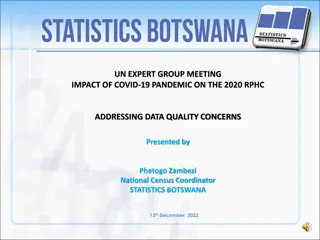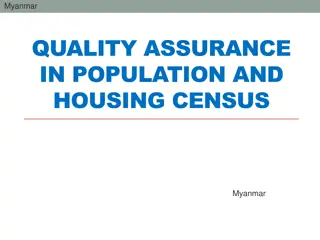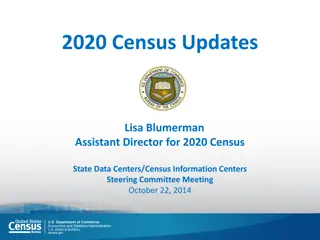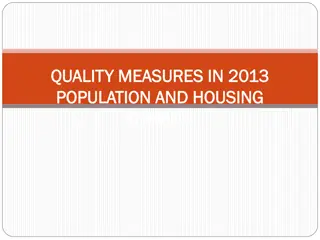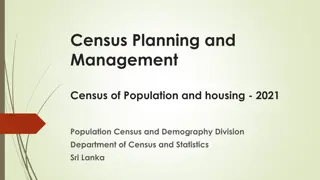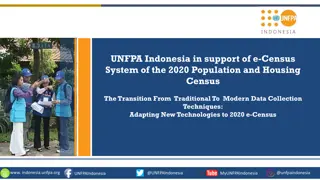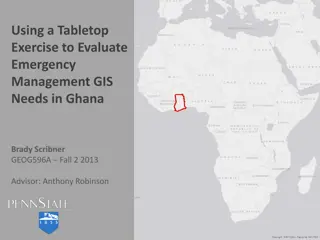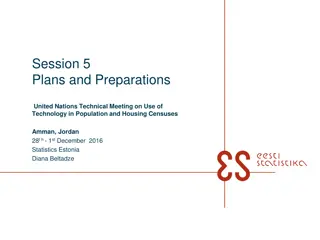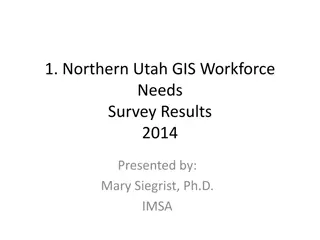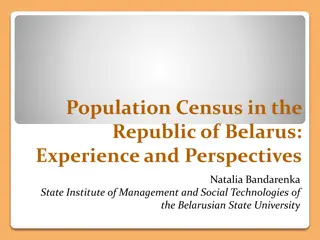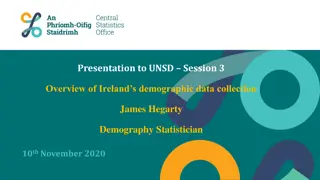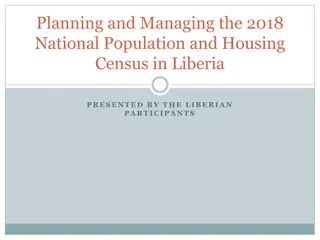Maximizing Efficiency Through GIS in the 2013 Population and Housing Census
The 2013 Population and Housing Census in The Gambia marked the first implementation of Geographic Information Systems (GIS) technology, streamlining data collection processes and ensuring comprehensive coverage of populated areas. GIS tools facilitated easy access to enumeration areas, data processing, and quality assurance through field visits and overlaying of GPS data. The use of GIS also enabled the production of updated maps, enhancing accuracy in census enumeration and avoiding overlaps. Overall, GIS played a pivotal role in optimizing the census operations and data analysis.
Download Presentation

Please find below an Image/Link to download the presentation.
The content on the website is provided AS IS for your information and personal use only. It may not be sold, licensed, or shared on other websites without obtaining consent from the author.If you encounter any issues during the download, it is possible that the publisher has removed the file from their server.
You are allowed to download the files provided on this website for personal or commercial use, subject to the condition that they are used lawfully. All files are the property of their respective owners.
The content on the website is provided AS IS for your information and personal use only. It may not be sold, licensed, or shared on other websites without obtaining consent from the author.
E N D
Presentation Transcript
The 2013 Population and Housing Census was the first census taken in The Gambia where Geographic Information Systems (GIS) technology was used. GIS has efficiently enhanced the 2013 census data collection and subsequent surveys. It has enhanced easy access to enumeration areas using geo-referenced maps and helped to avoid missing out populated areas.
Data entry clerks, editors and GIS staff were also recruited to do the processing of the collected geographic data at the office. The updated maps were scanned and georeferenced with the base map and then digitized. The completed forms from the field were entered in CSPro which was later exported to Microsoft excel and then imported to ArcGIS Desktop 10.0.
As part of quality assurance procedures the field coordinators made monthly field visits with the consultant to make sure the exercise was going well and also to address some of the issues that do arise sometime. In addition, the field coordinators do download the coordinates picked with GPS receivers and collect completed forms. The data entered from the completed forms and GPS data were overlayed to do necessary correction whenever the two datasets don t overlay well.
EA maps and supervision area maps (SA) were produced after the necessary editing and processing for census. The existing roads were updated using Google earth. The use of this technology has helped the office a lot to avoid overlaps during the census enumeration. In addition, the quick count of number of households and population per EA were used as a base to detect under count or over count.




